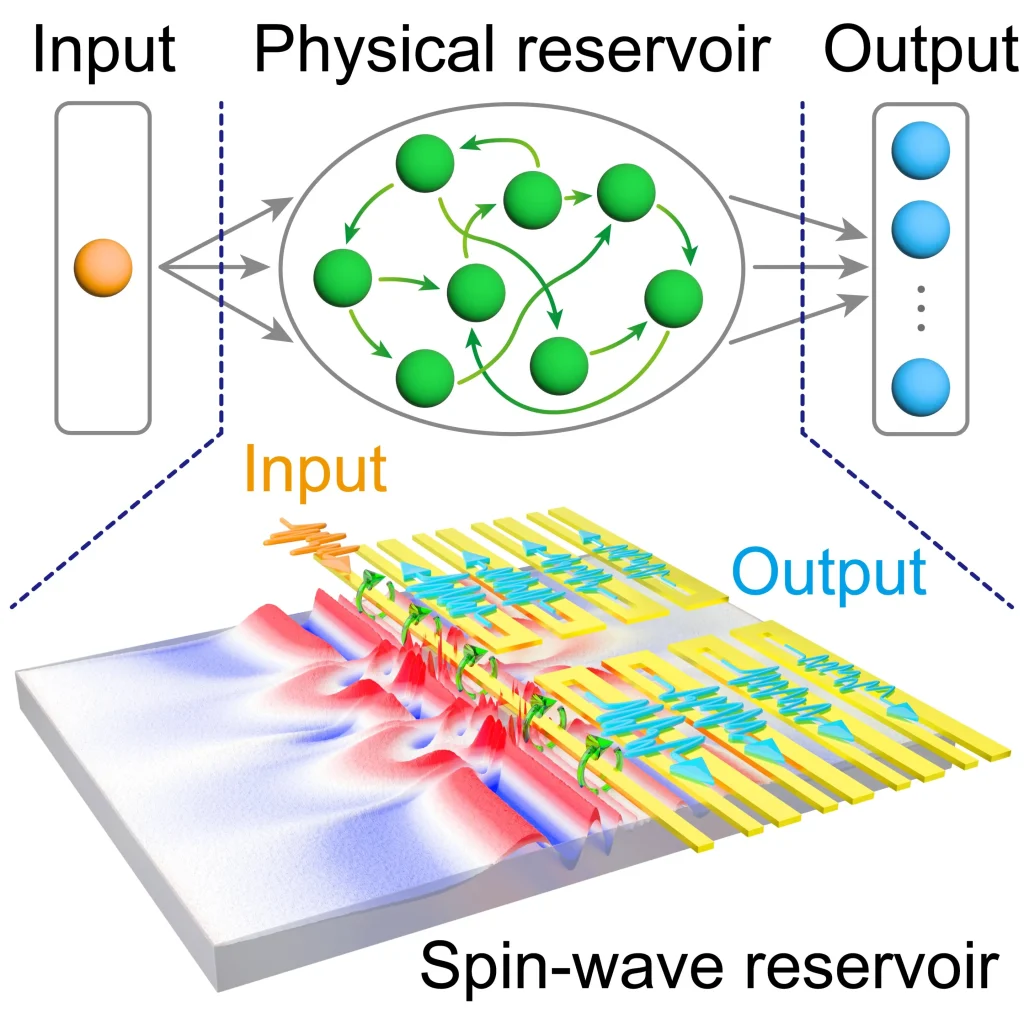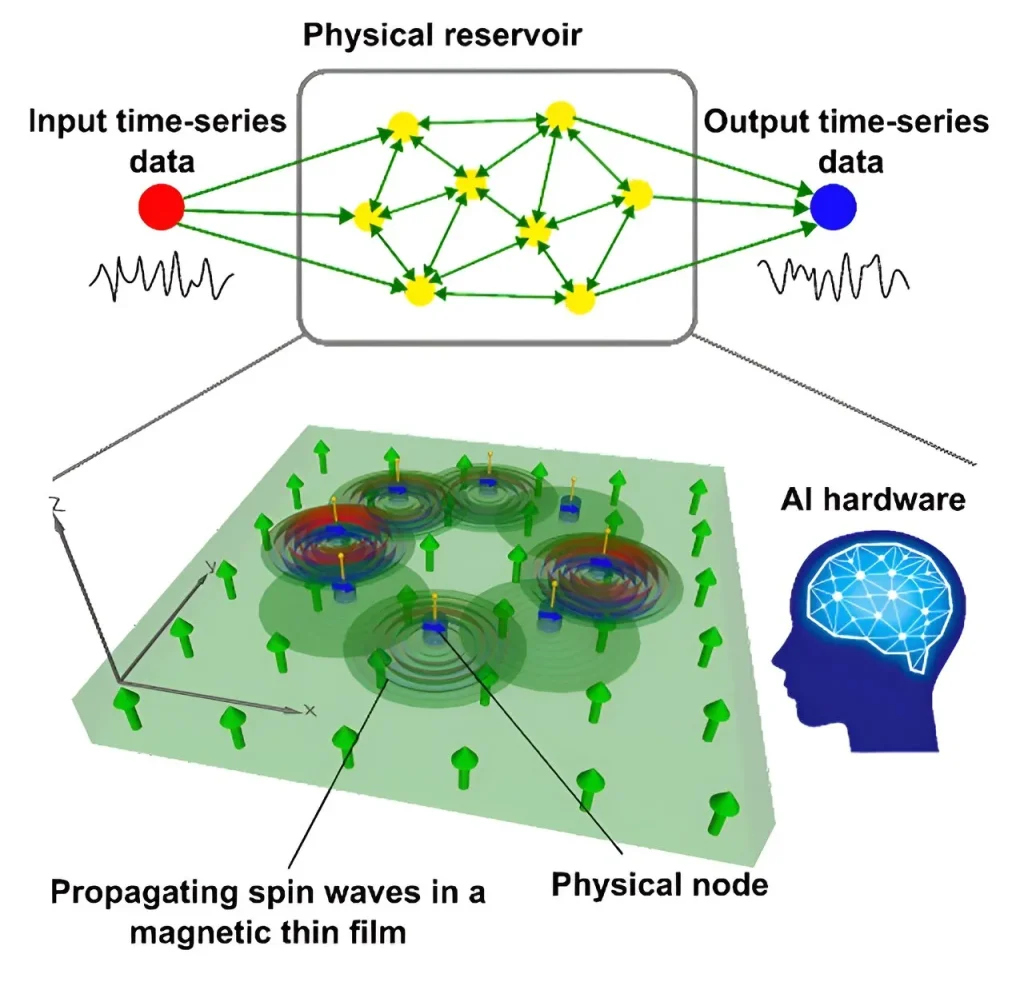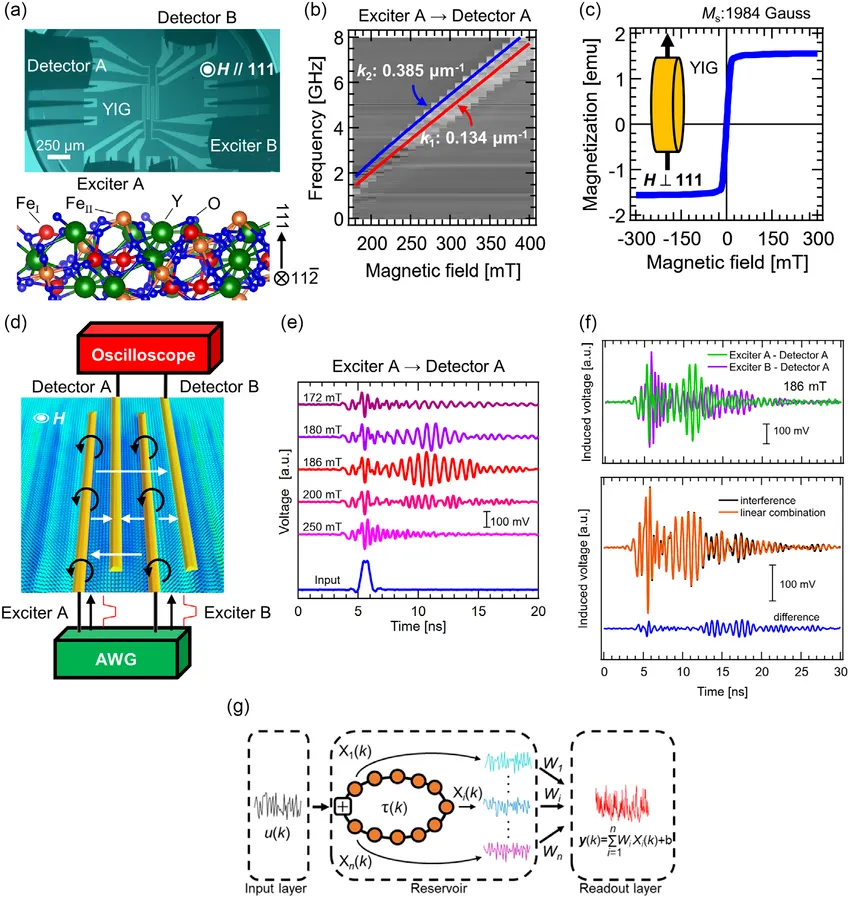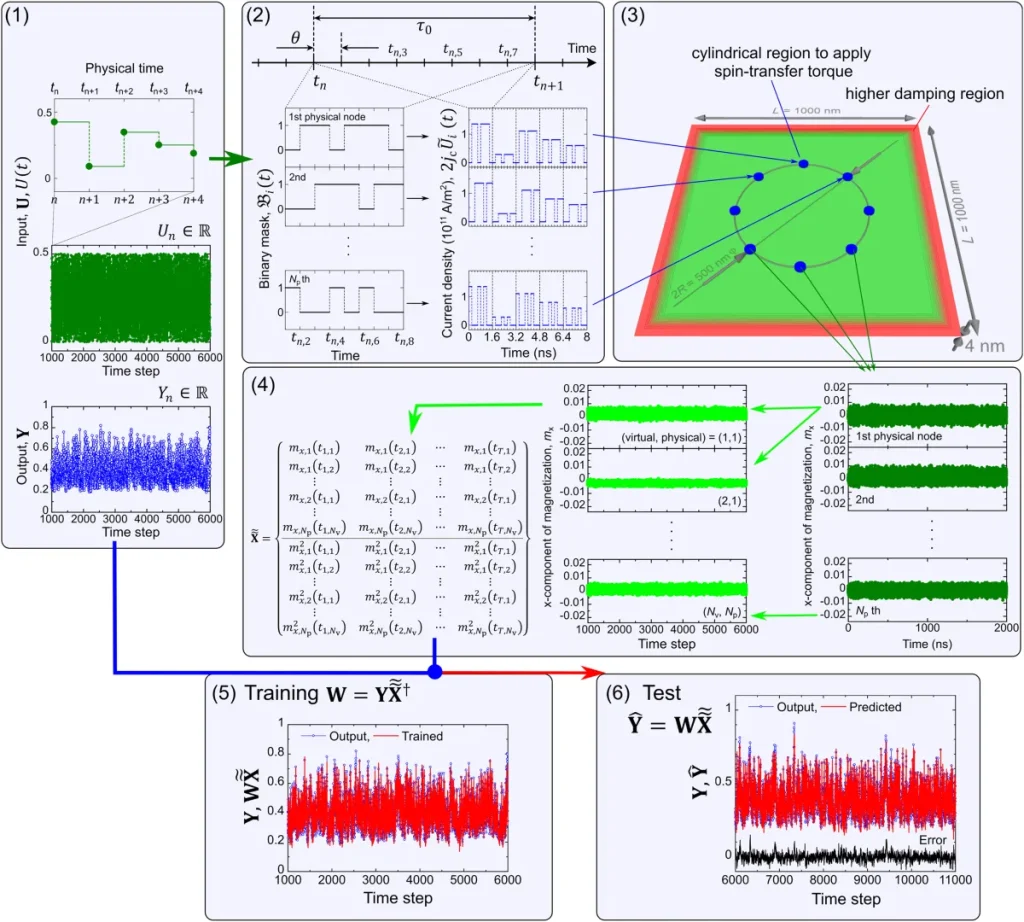
Spin-Wave Reservoir Chips: Revolutionizing Edge Computing
A research paper published in Physical Review Applied by Yokohama National University breaks new ground with a new edge computing technology that is going to turn the field upside down. The development of spin-wave reservoir chips marks a significant milestone in the field, offering a novel approach to nonlinear analog processing and electrical-to-spin conversion.
Spin-wave reservoir chips harness the power of propagating wave-like disturbances, known as spin waves, which arise from magnetic interactions within a material. Due to the strong coupling between the electrical and spin degrees of freedom, these new devices enable efficient and accurate signal processing.
Enhancing Learning Accuracy and Short-Term Memory
One of the key advantages of spin-wave reservoir chips lies in their ability to transform electrical signals into a corresponding spin-wave representation. It also has this kind of distinct feature useful for helping the resolution of better accuracy in learning and short-term memory sequence matching than artificial neural networks.
Signal origin from three spherical wave-excited surface mode spin waves was intercepted by the device that was a subject of study by Yokohama National University researchers. As predicted, the electrical signal of surface mode spin waves was detected at all four observation antennas to further prove the functionality of the device as one-input four-output reservoir.

Practical Implementation and Real-World Applications
Although the method forming the basis for spin-wave reservoirs has been analyzed in a series of previous theoretical publications, the present work introduces a practical methodology for their creation. The efficiency of the method was proven without help of the so-called virtual nodes, which are often applied for distribution of data and simplification of tasks.
The potential applications of this technology are numerous including development of biomedical imaging and autonomous vehicle development. By incorporating spin-wave reservoir chips into edge computing systems, researchers aim to enhance the efficiency and capabilities of these systems, enabling faster and more accurate processing of complex data.

Harnessing the Power of Spin-Wave Interference
The spin-wave reservoir chip proposed in this research work uses an easily magnetisable metal alloy thin film with a stable magnetisation. Magnetics fields are used in exciting spin waves while the waveforms are intercepted and identified using antennas. The external fields are then estimated through the spin wave reservoirs which is the next topic under discussion.
As a significant characteristic of this technology, Huygens slits are used for generating spin-wave interference. This interference is the force that makes the device more nonlinear and perform better in short terms memory tasks.

Overcoming Limitations and Future Developments
Concerning the presented Spin-wave reservoir chip prototype, the authors agree that more refinements are required. Some of the performance can be low under low levels of excitation that may present some difficulties in highly nonlinear information transformation.
Nevertheless, the experimental spin-wave reservoir chip is superior to other physical reservoirs in terms of performance of short-term memory tasks or error-correction tasks. The researchers express their ultimate goal of establishing edge computing technology utilizing spin-wave reservoir chips, with the aim of developing a wide range of applications.

Final Thought
As research in this field progresses, the potential for spin-wave reservoir chips to revolutionize edge computing becomes increasingly evident. Potential and opportunities of the practical development of such technology mission lies within the frames of faster, more efficient and essentially more precise handling of the complex data that in turn opens the enormous and previously unimagined potential for paramount steps forward in essentially all addressed domains.
Following the passage and complete slewing of the spin-wave reservoir chip, researchers are positive about this direction of development. As further developments and optimizations are made, the impact of spin-wave reservoir chips on edge computing and its associated applications is expected to grow exponentially, ushering in a new era of advanced signal processing and data analysis.




